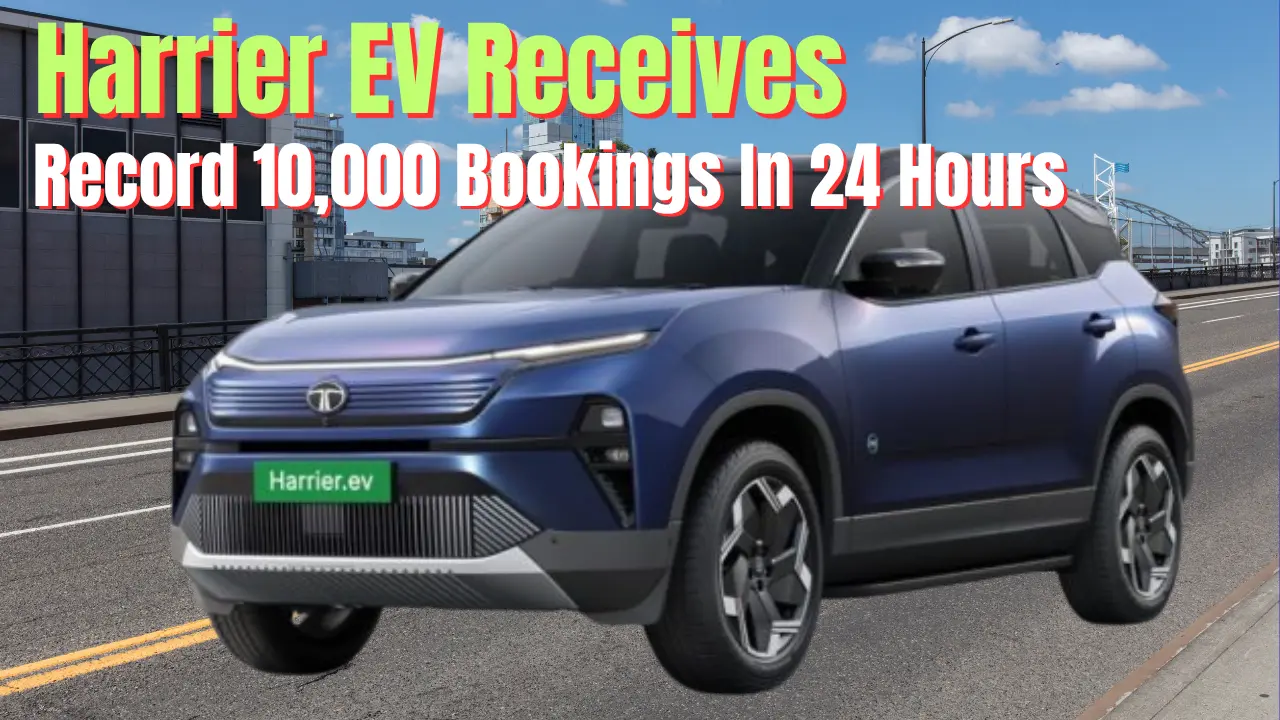The Tata Harrier EV has absolutely smashed it—racking up over 10,000 bookings in just 24 hours! This electric SUV is clearly hitting all the right notes with Indian buyers who seem ready to ditch petrol for pixels and power.
This kind of response? It’s pretty much unheard of in the Indian EV space. What we’re seeing here is a genuine tipping point where buyers aren’t just curious about electric SUVs—they’re actually putting their money where their mouth is. And with Tata already cranking up production at their Pune plant, we could see these beauties rolling out of showrooms by month-end.
What’s Driving This Booking Bonanza?
Look, 10,000 bookings in a day isn’t just impressive—it’s borderline crazy. Sure, Mahindra’s XEV 9e managed 16,900 on day one, but here’s what makes the Harrier EV different: production has already started. That means no endless waiting periods or “coming soon” promises. Real cars, real deliveries, real soon.
The booking amount? A modest ₹21,000. That’s pocket change for most folks considering a ₹20+ lakh SUV, which probably explains why people didn’t think twice before hitting that “book now” button.
Price That Makes Sense
Tata’s pricing game is spot-on here. At ₹21.49 lakh to start, the Harrier EV isn’t trying to be the cheapest kid on the block—it’s positioning itself as the sensible choice. Here’s how the lineup breaks down:
| Variant | Battery | Drive | Price (Ex-showroom) |
|---|---|---|---|
| Adventure | 65 kWh | RWD | ₹21.49 lakh |
| Adventure S | 65 kWh | RWD | ₹21.99 lakh |
| Fearless+ | 65 kWh | RWD | ₹23.99 lakh |
| Fearless+ | 75 kWh | RWD | ₹24.99 lakh |
| Empowered | 75 kWh | RWD | ₹27.49 lakh |
| Empowered | 75 kWh | QWD | ₹28.99 lakh |
The spread makes sense too—you’re not paying through the nose for basic features, but the top-end QWD variant justifies its premium with proper performance credentials.
Range That Actually Works
Here’s where things get interesting. The bigger 75 kWh battery promises 627 km on a single charge—that’s Mumbai to Pune and back with juice to spare. Even the smaller 65 kWh pack manages 538 km, which should handle most weekend getaways without breaking a sweat.
But here’s the thing about range figures—they’re often more optimistic than your morning weather app. Tata’s been refreshingly honest with their C75 real-world testing, suggesting you’ll actually get between 420-505 km depending on your driving style and variant. That’s still plenty for most folks.
Read Also: Mahindra XEV 9e, BE 6 Pack Two Gets 79 kWh Battery at Rs. 26.50 Lakh
Power Play
The QWD variant is where Tata decided to have some fun. Twin motors churning out 391 bhp and 504 Nm? That’s serious firepower. The 0-100 km/h sprint in 6.3 seconds puts it in sports car territory—not bad for a family SUV that can haul your weekend luggage and still embarrass hot hatches at traffic lights.
Even the regular RWD versions pack 238 bhp, which is more than enough for overtaking those slow-moving trucks on the highway without breaking into a sweat.
Safety First
Safety nerds will love this—the Harrier EV scored a perfect 5-star Bharat NCAP rating. We’re talking 32/32 for adult protection and 45/49 for child safety. Those aren’t just numbers on a brochure; they represent real engineering that could save lives when things go sideways.
Features That Matter
Beyond the usual bells and whistles, the Harrier EV brings some genuinely useful tech. Vehicle-to-Load means you can power your camping gear or run a small fridge during power cuts. Vehicle-to-Vehicle capability? That’s your good Samaritan feature for helping stranded friends.
The QWD version gets six terrain modes and a transparent bonnet view—because sometimes you need to see exactly where those front wheels are going, especially when navigating tight parking spots or rough terrain.
Charging-wise, you’re looking at 20-80% in about 25 minutes with a 120 kW DC fast charger. At home with a 7.2 kW setup? Plan for around 10.7 hours for a full top-up—perfect for overnight charging.
